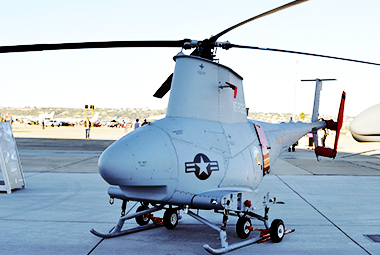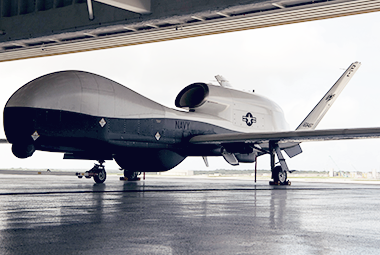In addition to its MRO programs servicing traditional naval aircraft, FRCSW also supports the maintenance needs of the Navy’s MQ-8B Fire Scout unmanned aerial vehicle (UAV).
Primarily used for reconnaissance, the Fire Scout is a helicopter-type UAV initially deployed in 2009 that may be launched from any naval vessel with aircraft-launching capability.
In 2015, Naval Air Systems Command (NAVAIR) designated FRCSW as a component source of repair for the MQ-8 airframe.
The command’s artisans perform Aircraft Condition Inspections (ACI) that target areas and components of the UAV identified in the ACI specification. The entire procedure averages about 60 days, or 700 hours.
Artisans conduct an evaluation and estimate (E&E) of the UAV that includes disassembly, assembly, wire testing, removal and reinstallation of the forward and aft fuel bladders, and a paint evaluation.
The 31-foot Fire Scout is also subject to modifications including heavy wire, radar and corrosion prevention measures. FRCSW is currently transitioning to support the new MQ-8C, a larger and faster model.
Furthermore, the command will handle MRO support to the MQ-4C Triton, a multi-mission UAV that is scheduled to be fully operational in 2023.

MQ-8B Fire Scout on display at NAS North Island, Calif.

MQ-4C Triton in a hangar at Andersen AFB, Guam.